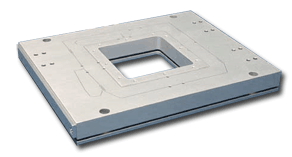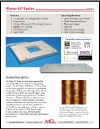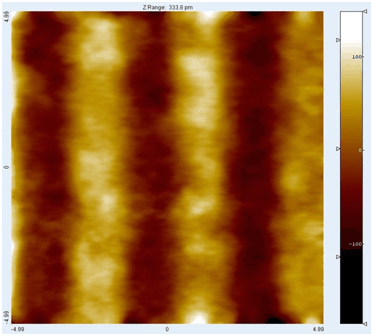

>>Nano-LP Series
Additional Information
Drawing
Catalog Pages
Related Products
Nano-LPS Series
Nano-LPQ
Nano-Bio Series
Nano-BioS Series
Nano-T Series
Nano-H Series
Nano-F3D
Nano-View Series®
Nano-View®/M Series
MicroStage Series
Manual MicroStage
Manual MicroStage-LT Series
Accessories
SPM Accessories
Nano-Drive®
Cyto-Lite™ Laser
Questions?
E-Mail Us


Product Description |
|
The Nano-LP Series are ultra-low profile, three axis piezo
nanopositioning systems with 100, 200, and 300 micron
ranges of motion in all three axes. The low height of
the Nano-LP Series allows it to be easily integrated into
existing inverted optical microscopes. With its extended
ranges of motion, the Nano-LP Series is ideal for demanding microscopy applications which require long
range travel, fast scan rates, and three axes of motion.
The Nano-LP Series’ internal position sensors utilize
proprietary PicoQ® technology to provide absolute, repeatable
position measurement with picometer accuracy
under closed loop control. See the Nano-Bio Series for a low-profile, 2-axis piezo nanopositioning system. Compatible Software Packages:      |
Technical Specifications |
|
| Range of motion (Nano-LP100) | 100 x 100 x 100 μm |
| Range of motion (Nano-LP200) |
200 x 200 x 200 μm |
| Range of motion (Nano-LP300) | 300 x 300 x 300 μm |
| Resolution (100/200/300 μm) | 0.2/0.4/0.6 nm |
| Resonant Frequencies | |
| X axis (100/200/300 μm) | 450/400/350 Hz ±20% |
| Y axis (100/200/300 μm) | 350/300/250 Hz ±20% |
| Z axis (100/200/300 μm) | 450/350/250 Hz ±20% |
| Stiffness | 1.0 N/μm |
| θ roll, θ pitch (typical) | ≤1 μrad |
| θ yaw (typical) | ≤3 μrad |
| Recommended max. load (horizontal)* | 0.5 kg |
| Recommended max. load (vertical)* | 0.2 kg |
| Body Material | Al (all models), Invar or Titanium (100 or 200μm only) |
| Controller | Nano-Drive® |
| * Larger load requirements should be discussed with our engineering staff. | |
Nano-LP200 Position Noise Spectrum |
AFM Verification of PicoQ® Sensor Technology PerformanceA piezo nanopositioner's inherent position noise must be very small in order for it to perform externally-detectable sub-nanometer motion. The AFM measurement below uses a Nano-LP100 and is one of many tests confirming that Mad City Labs nanopositioners with PicoQ® sensor technology set the standard for the lowest position noise on the market. Position noise of a piezo nanopositioning system is the ultimate limit of the system's measurement resolution. Many applications involving sub-nanometer measurements, such as atomic force microscopy (AFM), would not be possible without low noise nanopositioning systems. Some companies claim to sell systems with sub-nanometer resolution, but they do not have data from external metrology tests to support their claims. All Mad City Labs piezo nanopositioning products are rigorously tested before shipment. These tests involve a series of measurements designed to fully characterize the performance of the nanopositioning system with a realistic environment and testing conditions that match the application. Available metrology tools include NIST-traceable interferometers, high resolution AFM, and a high resolution position noise analyzer, designed specifically for nanopositioning characterization. The links below lead to in-depth descriptions of some of our AFM measurements.
Nano-LP100 and 450 micron range nanopositioner with PicoQ sensor technology perform 860 picometer steps, 1 nanometer sine wave, and repeated 95 picometer steps, externally measured by AFM. Nano-LP Series Demonstrations: Measuring Surface Roughness AFM is used to externally verify that the position noise of a Nano-LP100 with PicoQ® sensor technology is less than the surface roughness of a Si (111) sample, 60 pm RMS. |
Additional Information | |
Nano-LP Series Drawing |
Nano-LP Series Catalog Pages |
References | |
Related Products |
Copyright © 2024
